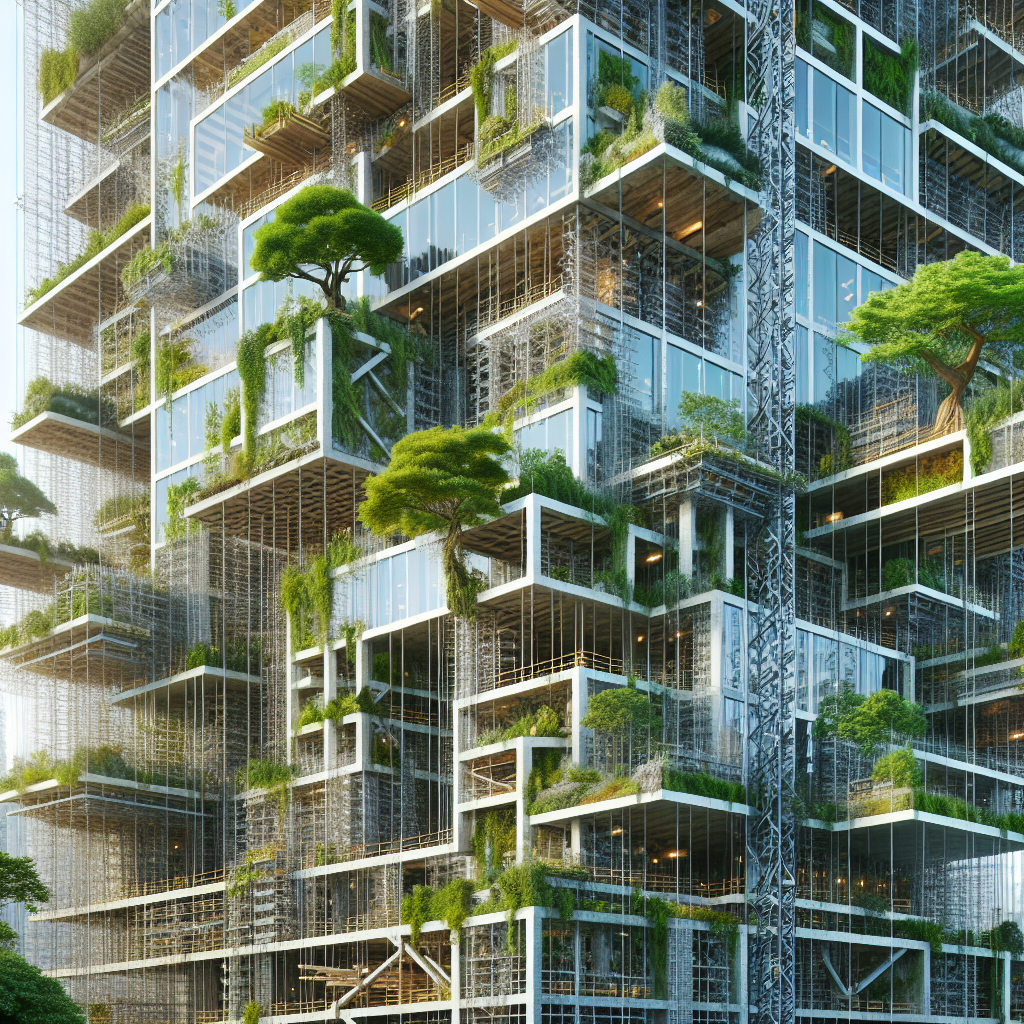Biophilic Design: Integrating Nature into Construction
In the hustle and bustle of today’s urban landscapes, the connection between nature and the built environment often seems severed. However, a growing movement in architecture and interior design is working to bridge this gap: biophilic design. This approach seeks not just to incorporate plants and water features into buildings but to foster a deeper connection between inhabitants and the natural world through thoughtful design. This article explores the principles of biophilic design, its benefits, and how it is being integrated into modern construction projects.
What is Biophilic Design?
Biophilic design is an innovative approach that goes beyond mere greenery, aiming to create a human-centered strategy that inherently includes the natural environment, leading to improved health and wellbeing for the occupants. It draws on the idea that humans have an innate tendency to seek connections with nature and other forms of life. Stephen Kellert, a leading figure in this field, along with Wilson, who coined the term “Biophilia,” emphasizes that incorporating direct or indirect elements of nature into the built environment can significantly reduce stress, enhance creativity and clarity of thought, improve our well-being and expedite healing.
Principles of Biophilic Design
The principles of biophilic design revolve around three main categories: Nature in the Space, Natural Analogues, and Nature of the Space. These categories aim to create rich, immersive environments that emulate the complexity of the natural world through direct inclusion of natural elements, indirect references to nature, and spatial configurations that mimic natural settings.
1. Nature in the Space refers to the direct presence of plants, water, and natural light within living spaces. This can include elements like indoor gardens, water features, and large, open windows that allow plenty of natural light and offer views of the outdoors.
2. Natural Analogues involves using materials, colors, patterns, and textures found in nature to inspire design elements within the space. Think wood grain, stone textures, and natural fibers, all of which evoke the natural world without directly incorporating living elements.
3. Nature of the Space focuses on the spatial configurations in design that replicate the varied and dynamic forms found in nature. This includes designing spaces that offer mystery, risk, and discovery – elements that encourage exploration and interaction with the built environment in a way that feels natural and intuitive.
Benefits of Biophilic Design
The benefits of biophilic design are extensive, impacting physical health, mental wellbeing, and even the bottom line for businesses:
– Health and Wellbeing: Studies show that environments incorporating natural elements can lead to a significant reduction in stress, enhanced emotional wellbeing, and improved cognitive function. For instance, hospital patients with views of nature tend to recover faster than those without.
– Productivity and Creativity: Workspaces designed with biophilic principles in mind can boost productivity and foster creativity among employees. Natural light, in particular, has been linked to improved mood and concentration.
– Economic Benefits: Although integrating biophilic design can require upfront investment, the long-term savings in healthcare costs, together with the increases in productivity, can lead to significant economic benefits. Moreover, biophilic design can increase property values and help businesses attract and retain talented employees.
Incorporating Biophilic Design in Construction
Incorporating biophilic design into construction projects requires a holistic approach from the outset. Architects and designers must consider the site’s natural features and climate, aiming to enhance rather than compete with the surrounding environment. This can include:
– Maximizing Natural Light: Designing buildings to capture as much natural light as possible, using features like skylights and large windows.
– Natural Ventilation: Creating spaces that can be naturally ventilated reduces the need for artificial climate control, fostering a closer connection to the outdoor environment.
– Local Materials and Textures: Using locally sourced materials not only reduces the carbon footprint but also helps the building blend with its natural surroundings.
– Outdoor-Indoor Spaces: Designing transitional spaces like atriums, terraces, and gardens that allow occupants to enjoy the benefits of nature even when indoors.
FAQs
Q: Is biophilic design only applicable in new constructions?
A: No, biophilic principles can be retrofitted into existing structures through interior design modifications, adding plant life, natural light, and natural materials.
Q: Are there any challenges to implementing biophilic design?
A: Challenges can include cost, maintenance of natural elements, and the need for interdisciplinary collaboration during the design process. However, the long-term benefits often outweigh these initial challenges.
Q: Can biophilic design contribute to sustainability?
A: Yes, by promoting the use of natural materials and improving energy efficiency through natural lighting and ventilation, biophilic design can enhance a building’s sustainability.
Q: How can cities benefit from biophilic design?
A: Incorporating biophilic design in urban areas can improve air quality, reduce urban heat island effects, and enhance the wellbeing of residents, creating more livable and resilient cities.
In conclusion, biophilic design represents a paradigm shift in how we approach the built environment, emphasizing a symbiotic relationship between nature and human-made spaces. By integrating natural elements into our buildings and cities, we can foster healthier, more productive, and more sustainable communities for future generations.

